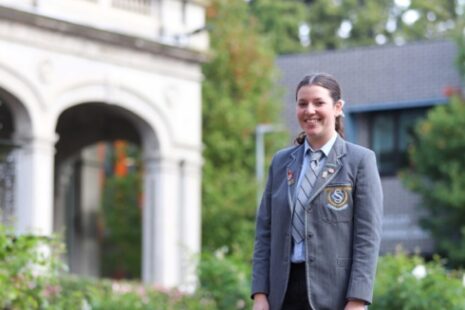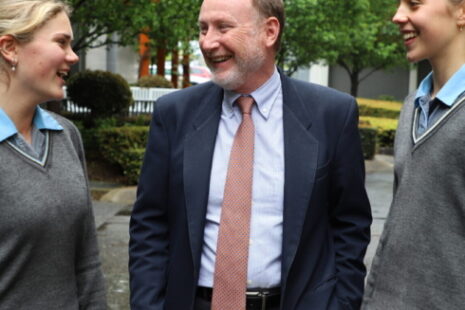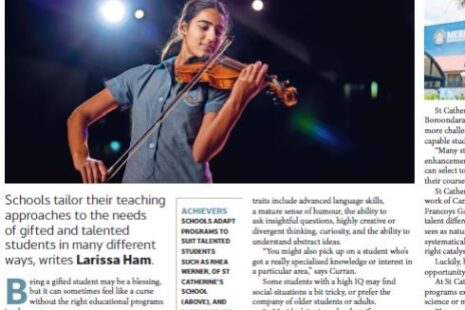Embodied Pedagogies in the Early Learning Centre

Children require regular opportunities to connect with other learners and explore ideas through their bodies
“There is a vitality, a life force, an energy, a quickening that is translated through you into action, and because there is only one of you in all time, this expression is unique. And if you block it, it will never exist through any other medium and will be lost. The world will not have it.”
Martha Graham to Agnes DeMille
Embodied pedagogies in teaching and learning are based on the principle that human beings construct knowledge and understanding through their bodies. This is an important concept to consider when planning and implementing learning experiences for the children in the Early Learning Centre. Embodied pedagogies heighten engagement, showcase thinking in action, and promote wellbeing through experiential, sensory play and learning. Embodied pedagogies reflect socio-constructivist perspectives and the Reggio Emilia approach, which inspires our practice in Campbell House, by promoting social interaction through a focus on collaborative, social learning.
Teachers strive for a fully engaged learner and embodied pedagogies can help foster balanced, curious, expressive, aware and fearless learners who are intentionally invited to engage fully with their bodies. It is important for children to be invited to move out of their heads and into their bodies. Teachers can find legitimate, authentic and meaningful ways to use movement in their programs. For example, in embodying the different stages of a bird’s life cycle to a piece of music, the children learn experientially through expressive movement and are able to more accurately recall and articulate each stage.
There are evident connections between embodied pedagogies and the Arts. Deans, Meiners and Young (2012, p.128) believe that:
“All Art is the embodiment of experience shaped into something else. The sensory experiences of our bodies and responses to the environment and physical materials we find around us are fundamental to generating and realising our intentions as we sing, dance, play a role, draw, paint or story-tell.”
The Arts enable children to explore their feelings whilst engaging in learning experiences of a social nature, fostering empathy and respectful relationships. Profound experiential learning occurs through the Arts, as they involve all the senses.
Embodied pedagogies share similar elements with children’s dramatic play and the discipline of Drama. Jean Piaget and Lev Vygotsky underscore that “play and Art are equally crucial to human development” (Jeanneret, 2012, p. 22). As Drama can grow out of children’s play, drama-based embodied pedagogies are readily implemented in Campbell House, as the children find this way of working so accessible. Drama cultivates a co-operative approach to learning, improves communication skills and helps children to understand their world and give it meaning.
Dance, Music and movement experiences allow children to learn about their world and its inhabitants by connecting social understandings, emotion and the body. Dance is “the most totally embodied of artforms, and therefore also one of the most fully sensory and most natural forms of learning” (Deans et al., 2012, p.128). It is an approach that helps give each child a voice through movement.
The prevailing view of professional literature and experiences in practice, is that children require regular opportunities to connect with other learners and imaginatively explore ideas through their bodies.
Miss Kristina Schrader
Wattle Room Teacher
References
Deans, J., Meiners, J. & Young, S. (2012). Dance: Art embodied. In Sinclair, C., Jeanneret, N. & O’Toole, J. (Eds.), Education in the arts(pp. 128-144). South Melbourne: Oxford University Press.
Jeanneret, N. (2012). Learning in the arts. In Sinclair, C., Jeanneret, N. & O’Toole, J. (Eds.), Education in the arts (pp. 15-24). South Melbourne: Oxford University Press.





